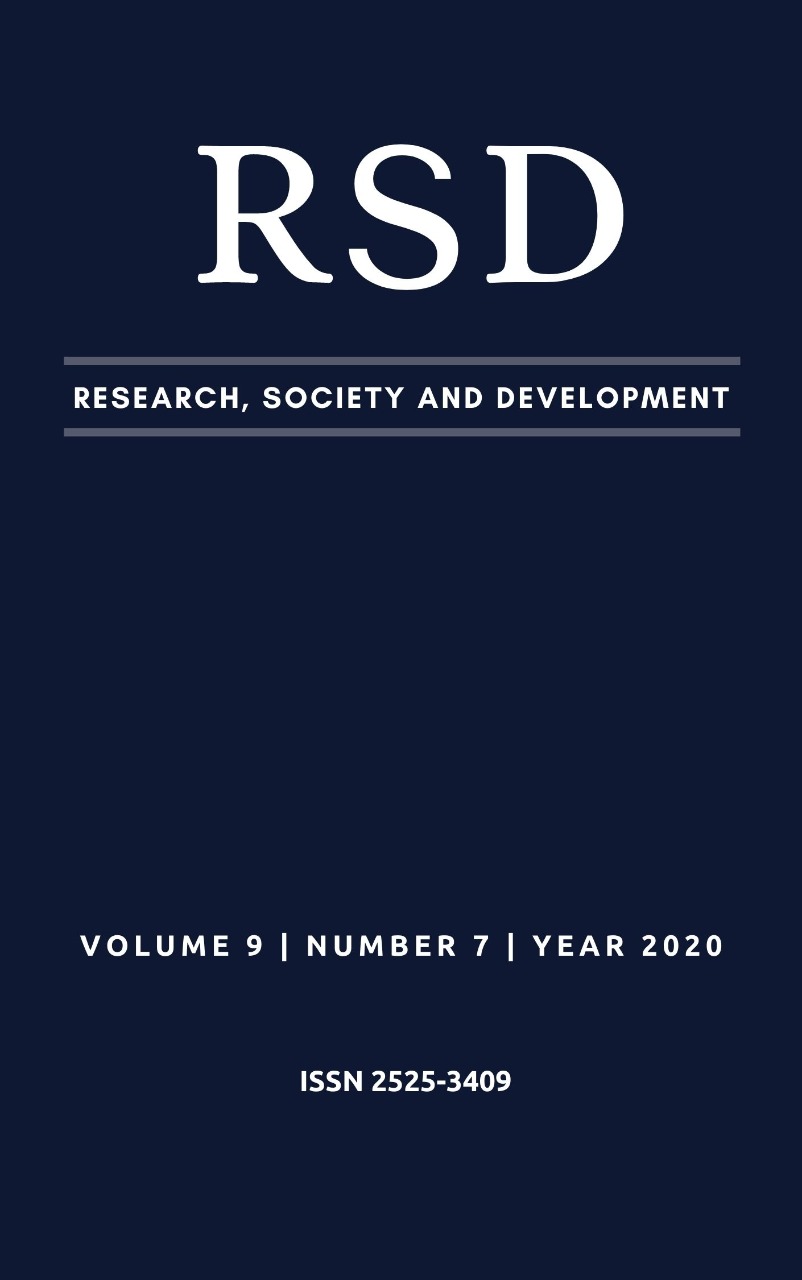Production and characterization of amylase obtained from Rhizopus microsporus var. oligosporus
DOI:
https://doi.org/10.33448/rsd-v9i7.4810Keywords:
Biocatalysis, Thermostability, Response Surface Methodology.Abstract
Amylases have the ability to catalyze the α-1,4 binding of starch by releasing glucose and dextrin, with prominence in several industrial fields. The research sought to characterize the enzyme amylase obtained from the fungus Rhizopus microsporus var. oligosporus, through the Doehlert methodology, evaluating the behavior of the enzyme in the face of variations in pH and temperature. The production of amylase occurred with the use of starch as an inducer, and the characterization was carried out using the response surface methodology, with pH analysis at 5 levels (3.0, 4.0, 5.0, 6.0 and 7.0) and temperature in 3 levels (30, 50 and 70°C). The evaluation of the amylase thermostability occurred at 60, 70 and 80ºC. The application of the experimental model indicated that the amylase obtained from R. microsporus var. oligosporus shows better catalytic development at temperatures between 40ºC and 55ºC and pH between 2.5 and 3.2. The evaluation of thermostability indicated that the increase in temperature negatively influences the catalytic activity of amylase. The experimental model led to the understanding of the conditions favorable to the production of amylases from R. microsporus var. oligosporus.
References
Abdulaal, W. H. (2018). Purification and characterization of α-amylase from Trichoderma pseudokoningii. BMC Biochemistry, 19(1), 4–9. https://doi.org/10.1186/s12858-018-0094-8
Bradford, M. M. (1976). A rapid and sensitive method for the quantitation of microgram quantities of protein utilizing the principle of protein-dye binding. Analytical Biochemistry, 72(1–2), 248–254. https://doi.org/10.1016/0003-2697(76)90527-3
Bussa, N. F., Moges, M., Muthuswamy, M., & Abdisa, M. (2019). Isolation and Characterization of Amylase Enzyme from Selected Fungal Strains of Wof Washa Forest of. Scientific Journal of Biology & Life Sciences, 1(2), 1–10.
Chang, Y.-H., Chang, K.-S., Chen, C.-Y., Hsu, C.-L., Chang, T.-C., & Jang, H.-D. (2018). Enhancement of the Efficiency of Bioethanol Production by Saccharomyces cerevisiae via Gradually Batch-Wise and Fed-Batch Increasing the Glucose Concentration. Fermentation, 4(2), 45. https://doi.org/10.3390/fermentation4020045
Chapman, J., Ismail, A., & Dinu, C. (2018). Industrial Applications of Enzymes: Recent Advances, Techniques, and Outlooks. Catalysts, 8(6), 238. https://doi.org/10.3390/catal8060238
Choi, J. M., Han, S. S., & Kim, H. S. (2015). Industrial applications of enzyme biocatalysis: Current status and future aspects. Biotechnology Advances, 33(7), 1443–1454. https://doi.org/10.1016/j.biotechadv.2015.02.014
Christopher, N., & Kumbalwar, M. (2015). Enzymes used in Food Industry A Systematic Review. International Journal of Inovative Research in Science Engineering and Technology, 4(10), 9830–9836. https://doi.org/10.15680/IJIRSET.2015.0410073
Kelleci, B. M., & Comlekcioglu, U. (2016). Production of amylolytic enzyme by rumen fungi, neocallimastix sp. K7 and orpinomyces sp. K5. Journal of Animal and Plant Sciences, 26(1), 242–252.
Miller, G. L. (1956). Use of DinitrosaIicyIic Acid Reagent for Determination of Reducing Sugar. Analytical Chemistry, 31, 426–428. https://doi.org/10.1021/ac60147a030
Porter, J. L., Rusli, R. A., & Ollis, D. L. (2016). Directed Evolution of Enzymes for Industrial Biocatalysis. ChemBioChem, 17(3), 197–203. https://doi.org/10.1002/cbic.201500280
Raveendran, S., Parameswaran, B., Ummalyma, S. B., Abraham, A., Mathew, A. K., Madhavan, A., … Pandey, A. (2018). Applications of microbial enzymes in food industry. Food Technology and Biotechnology, 56(1), 16–30. https://doi.org/10.17113/ftb.56.01.18.5491
Simair, A. A., Qureshi, A. S., Khushk, I., Ali, C. H., Lashari, S., Bhutto, M. A., … Lu, C. (2017). Production and Partial Characterization of α-Amylase Enzyme from Bacillus sp. BCC 01-50 and Potential Applications. BioMed Research International, 2017. https://doi.org/10.1155/2017/9173040
Singh, R., Kumar, M., Mittal, A., & Mehta, P. K. (2016). Microbial enzymes: industrial progress in 21st century. 3 Biotech, 6(2), 1–15. https://doi.org/10.1007/s13205-016-0485-8
Singh, S., & Bajaj, B. K. (2017). Potential application spectrum of microbial proteases for clean and green industrial production. Energy, Ecology and Environment, 2(6), 370–386. https://doi.org/10.1007/s40974-017-0076-5
Wang, S., Lin, C., Liu, Y., Shen, Z., Jeyaseelan, J., & Qin, W. (2016). Characterization of a starch-hydrolyzing α-amylase produced by aspergillus niger WLB42 mutated by ethyl methanesulfonate treatment. International Journal of Biochemistry and Molecular Biology, 7(1), 1–10.
Xian, L., Wang, F., Luo, X., Feng, Y. L., & Feng, J. X. (2015). Purification and characterization of a highly efficient calcium-independent α-amylase from Talaromyces pinophilus 1-95. PLoS ONE, 10(3), 1–18. https://doi.org/10.1371/journal.pone.0121531
Yan, S., Xiangsong, C., & Xiang, X. (2019). Improvement of the aroma of lily rice wine by using aroma-producing yeast strain Wickerhamomyces anomalus HN006. AMB Express, 9(1), 89. https://doi.org/10.1186/s13568-019-0811-8
Downloads
Published
Issue
Section
License
Authors who publish with this journal agree to the following terms:
1) Authors retain copyright and grant the journal right of first publication with the work simultaneously licensed under a Creative Commons Attribution License that allows others to share the work with an acknowledgement of the work's authorship and initial publication in this journal.
2) Authors are able to enter into separate, additional contractual arrangements for the non-exclusive distribution of the journal's published version of the work (e.g., post it to an institutional repository or publish it in a book), with an acknowledgement of its initial publication in this journal.
3) Authors are permitted and encouraged to post their work online (e.g., in institutional repositories or on their website) prior to and during the submission process, as it can lead to productive exchanges, as well as earlier and greater citation of published work.


